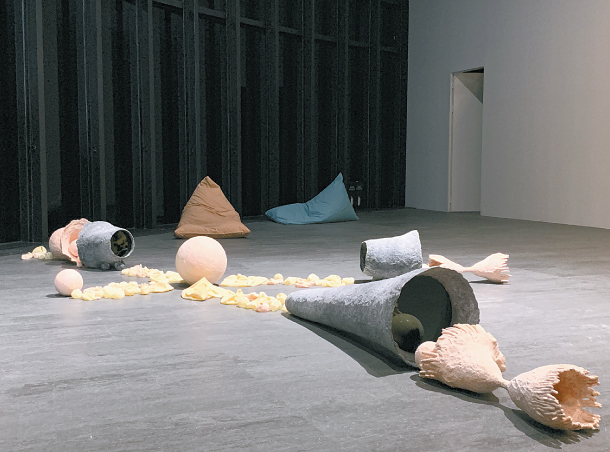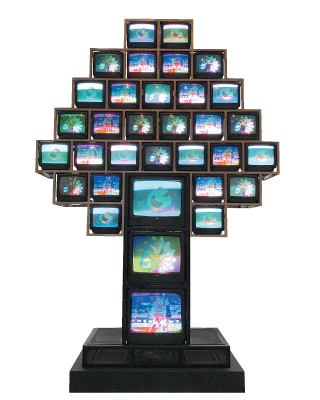Connection between humans, nature examined in show

Jiyoung Yoon’s “juxtaposed” (2019) consists of sculptures that resemble skin-shedding as found in nature. [NAM JUNE PAIK ART CENTER]
“Ecological Sense,” which opened last week, showcases installation and media works by Paik and other Korean and foreign artists that express a longing for nature or criticize the negative impact that human activity has on the environment today.
“Because we are the Nam June Paik Art Center, we always consider his convictions [when planning exhibitions],” said Goo Jeong-hwa, curator of “Ecological Sense,” during a press briefing last Thursday ahead of the exhibition’s launch at the art center in Yongin, Gyeonggi.
Paik’s interest in ecology is evident in many of his writings, Goo added, citing an excerpt from his 1974 article “Global Groove and Video Common Market.” In it, Paik writes “Ecology is not ‘politics’ but a devoted Weltanschung [world view], which believes in world design, global recyclization, the shift of our attitude from ‘you OR me’ to ‘you AND me.’”

Nam June Paik’s “Apple Tree” (1995) is a stack of TV monitors made to look like a tree during photosynthesis. [NAM JUNE PAIK ART CENTER]
The majority of the other works on display can be divided into two large themes - those that highlight the harmful impact of human activity and those that express the artist’s desire to be at one with nature.
Jiyoung Yoon’s “juxtaposed” (2019) falls under the first category. For this multi-object piece, the artist presents a snow globe, bean bags and toy slime - all made for human pleasure at the cost of creating harmful waste like microplastics. Similarly, French artist Anais Tondeur spotlights human destruction with “Chernobyl Herbarium” (2011-2016), a collection of plant imprints that reflect exposure to radiation from the 1986 explosion at the Chernobyl nuclear power plant.
A longing to be together with nature is evident in works like Park Sunmin’s “Architecture of Mushroom” (2018), a slow-motion shot of mushrooms growing in a forest in Jeju, and Eunji Cho’s “Octopus Ecstasy” (2019) which shows the artist herself engaged in meditative poses on a peaceful shoreline.
BY KIM EUN-JIN [kim.eunjin1@joongang.co.kr]
“Ecological Sense” runs through Sept. 22. Entry is free. The exhibit is open from 10 a.m. to 7 p.m. in July and August, and until 6 p.m. in September.










with the Korea JoongAng Daily
To write comments, please log in to one of the accounts.
Standards Board Policy (0/250자)